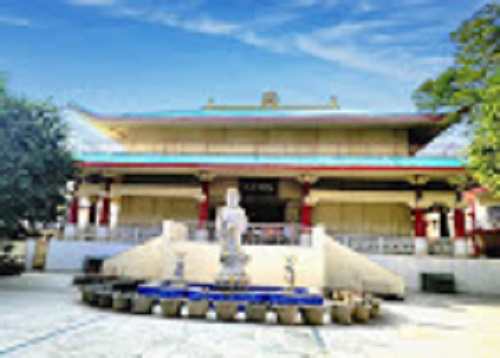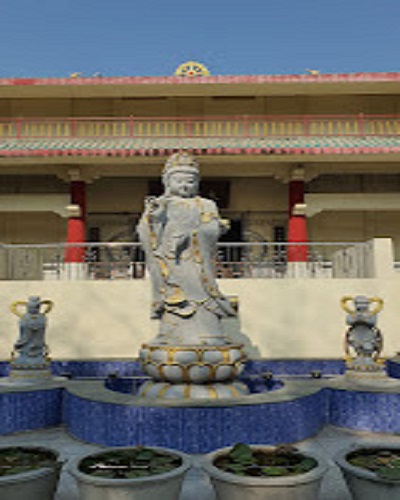Inside Area

The inside area of the Chinese Temple in Bodh Gaya offers a peaceful and culturally rich atmosphere that reflects traditional Chinese Buddhist design. As you enter the temple, you are greeted by the gentle fragrance of incense and a serene environment perfect for meditation and prayer. At the center of the prayer hall sits a graceful golden statue of Lord Buddha, depicted in a meditative posture, radiating calm and compassion. The walls are decorated with Chinese-style murals and calligraphy, showcasing scenes from the life of Buddha and Buddhist teachings. The temple features elegant pagoda-style architecture, with red wooden pillars, golden carvings, and beautifully painted ceilings that reflect Chinese artistic influence. The quiet surroundings and spiritual ambiance make it a peaceful place to sit, reflect, or offer prayers. The combination of sacred art, silence, and devotion inside the Chinese Temple creates a truly soothing experience for visitors and pilgrims alike.
Other Attractions
Apart from its beautiful interior, the Chinese Temple in Bodh Gaya is surrounded by several attractions that enhance the overall spiritual experience. One of the main highlights is the traditional Chinese-style garden located near the temple premises, which offers a quiet space for relaxation and reflection, with neatly trimmed trees, stone paths, and ornamental decorations. The temple’s exterior architecture itself is an attraction, featuring a classic multi-tiered pagoda-style roof, red-painted wooden beams, and golden dragon motifs that draw attention and admiration from visitors. Outside the temple, Chinese prayer wheels and small shrines add to the cultural depth of the area. Nearby, you can find stalls selling Chinese incense sticks, Buddhist books, souvenirs, and handicrafts, offering a glimpse into Chinese devotional items. During important Buddhist festivals like Vesak or Chinese New Year, the temple is decorated with lanterns and becomes a hub for cultural programs and traditional prayers. Its close proximity to other international temples such as the Japanese, Thai, and Bhutanese monasteries makes the Chinese Temple part of a rich spiritual circuit in Bodh Gaya, attracting pilgrims and tourists from across the world.

Distance From
Gaya Railway Station
The Chinese Temple in Bodh Gaya is about 14 km from Gaya Railway Station

Gaya Airport
The Chinese Temple in Bodhgaya is about 10 kilometers from Gaya International Airport.

Gaya Bus Stand
The Chinese Temple in Bodhgaya is located about 12 kilometers from the Gaya Bus Stand

Our Review
The Chinese Temple in Bodhgaya is a serene and culturally enriching destination that beautifully reflects the essence of Chinese Buddhist architecture. As we entered, we were instantly drawn to the vibrant red and golden colors, intricate carvings, and peaceful atmosphere. The temple houses a majestic statue of Lord Buddha and showcases traditional Chinese art and decor that adds a unique charm to Bodhgaya’s spiritual landscape. The surroundings are clean and well-maintained, offering a quiet space for meditation and reflection. It’s located close to the Mahabodhi Temple, making it an easy addition to any spiritual or cultural tour of Bodhgaya. The temple staff were friendly and respectful, contributing to the overall welcoming vibe. In short, the Chinese Temple is a must-visit spot for those seeking cultural diversity, peace, and a deeper understanding of international Buddhist traditions. It adds a beautiful global touch to Bodhgaya’s sacred environment.
